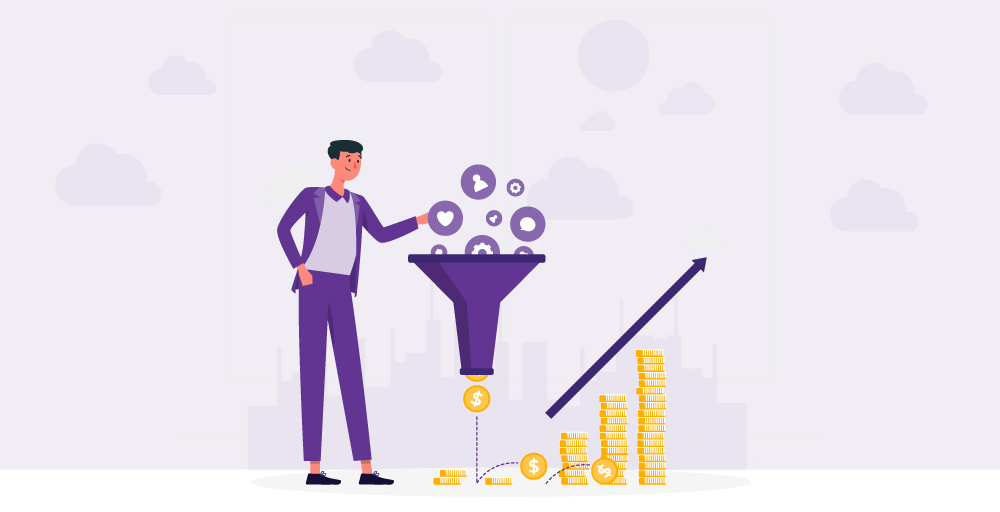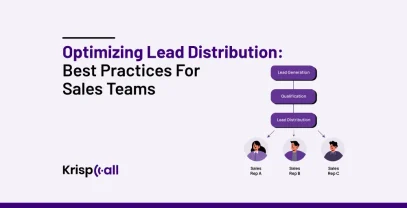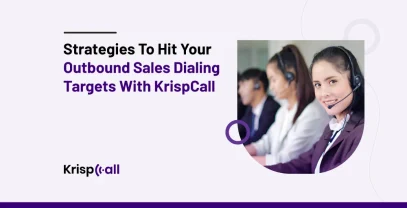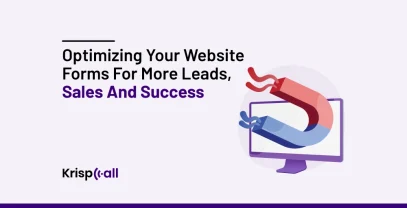Is your sales process unstructured? If you are unable to attract 🤓 customers and improve your sales. Then, you have come to the right place.
The best way to solve this issue is to develop an effective sales pipeline for your business. Businesses that managed their pipelines well saw an average revenue growth rate of 15% compared to their competitors.
Proper sales pipelines can help you track the volume of leads and qualified buyers entering your business, thereby strategically growing your overall sales.
In this article, you’ll understand the concept of the sales pipeline, its various stages, why it’s beneficial, its examples, the best practices you must follow, and the procedure to build your own sales pipeline.
🔑 KEY HIGHLIGHTS
- A sales pipeline is a road map that shows various interconnected stages of the sales process.
- Some sales pipeline insights include sales forecasting, conversion rates, customer insights, and finding bottlenecks.
- The sales pipeline stages are lead generation, lead qualification, needs analysis, proposal and presentation, negotiation, closing, and post-purchase.
- Building your sales pipeline includes identifying your consumers, determining your sales goals, using the right sales pipeline management tools, and so on.
- Defining the stages of your sales pipeline, Closely monitoring sales metrics, and continuously adding leads to your pipeline are some of the best sales pipeline practices.
What is a Sales Pipeline?

A sales pipeline is a visible, structured representation of the multiple stages involved in a sale process. It is a road map that shows the way a potential customer goes through their first interaction until they make the purchase. It is a series of connected steps, each representing a separate phase in the sales cycle.
Each measure is connected with another in sales progression and represents a different phase of the sales stages. For example, in the first stage, the “initial contact phase,” the company communicates with prospective customers. However, a sales representative might consider such a consumer a qualified lead if he/she can demonstrate how this product will benefit them.
The sales pipeline can be handy for business leaders if they want to obtain vital information that can help them make decisions that improve sales through data. Studying how leads move from the various stages in the sales cycle helps businesses understand precisely what takes place during the selling process. Using sales reporting tools within the sales pipeline enables businesses to measure and analyze each stage’s performance, delivering actionable insights to improve overall sales productivity.
Some of the insights into the sales pipelines that help the business owners are:
- Sales forecasting
- Conversion rates
- Customer insights
- Finding bottlenecks
Why does the Sales Pipeline matter?
The sales pipeline is vital for any business because it provides important visibility and insights into the entire sales process. Some of the reasons why the sales pipeline matters are:
Forecasting and Planning
Businesses can improve the accuracy of their sales forecasts by analyzing the data in the sales pipeline (e.g., the value and stage of each contract). Effective resource allocation, financial planning, and setting realistic revenue targets all depend on the ability to predict the future.
Businesses can forecast future revenue and make smart strategic choices by understanding where prospects stand within their stages of sales pipeline.
Visibility and Tracking
The sales pipeline helps businesses graphically visualize their entire sales process, from lead generation through closed-out deals.
Through this, the leadership and the sales team can easily monitor each and every opportunity closely, determine a stage where there is a prospect issue, and address or unblock anything that may hinder the closing of the transactions.
Customer Insights
Information collected through the sales pipeline regarding the client’s pain points and buying behaviors can be robust data that can impact many aspects of the business.
This means that businesses can potentially cultivate higher levels of consumer satisfaction and loyalty by informing the creation of new products and services, influencing how they market those products and services to the target audience, and enabling sales personnel to understand better to serve their customers.
Collaborative Teamwork
The sales pipeline shares a common view about the customer journey between the marketing and sales teams so that both teams can benefit from enhanced teamwork.
They can use this shared knowledge to improve customer interaction, increase the number of new leads they acquire, and ensure that customers enjoy a more personalized and smoother experience as the result of coordinated efforts on pipeline information.
Sales Pipeline Stages
Some of the sales pipeline stages are:
1. Lead Generation
In this stage, different marketing plans, such as advertisements, content marketing, events, referrals, and cold outreach methods, are employed to find possible clients. The main goal is to form a pool comprising individuals who can become potential customers.
2. Lead Qualification
After performing various approaches, you now have the best opportunity for conversion. The sales team evaluates the leads produced. It considers aspects such as the lead’s spending limit, the urgency of the need for the product or service, and the time span within which it may be purchased. This process assists in identifying highly probable leads.
3. Needs Analysis
The sales representative talks to someone who has agreed to have a conversation to gather information about the issues that have somehow affected them. This process involves careful listening, asking smart questions, and recording what we want and any associated concerns.
4. Proposal & Presentation
Sales experts create a proposal that includes the terms and conditions, price, and other details of a service. Their main objective is to convince a prospect to buy and continue the sales process. Comprehensive research should be conducted to comprehend a client’s expectations and problem areas.
5. Negotiation or Closing
At this point, the sales representative and the prospect negotiate the concluding conditions for the deal, which comprise price, delivery, and other essential transaction details. The sales representative must answer all the prospect’s queries and objections and find a solution that works.
6. Closing The Deal
The sales representative and potential customer are set to close the deal. As a result, they must sign an agreement that outlines aspects of the terms and obligations. Even if the potential customer rejects the offer, the parties should remain hopeful. In this case, they must guide and nurture the clients from the initial phase.
7. Post-Purchase
The last phase will focus on keeping the current clients satisfied. This includes creating and maintaining strong customer relationships. Consumers could have doubts or issues regarding the products after purchase, leading to dissatisfaction. It is important to provide exceptional customer service and personalized experiences to increase the client’s retention.
Sales Pipeline Examples
Let’s assume that you’re running a SaaS product. Let’s examine how the sales pipeline stages might work in such a business.
Lead Generation Example
SaaS firms typically focus on lead generation methods and digital marketing, encompassing tactics such as content marketing, pay-per-click advertising, social media engagement, etc, to attract new customers.
Some possible ways to identify potential clients include entering contests supported by your targeted LinkedIn ads, participating in related conferences, and receiving inquiries from potential tenants at your website’s ‘Request a Demo’ page.
Lead Nurturing Example
The sales representative will identify prospects who may be likely to buy the service and later follow up with these prospects to determine whether they are still keen to buy the service. By identifying these business demands, one can decide whether they meet the qualifications or not.
The sales representative can opt for interviews, questions, or even product demonstrations for the prospect interested in the product and check the prospect’s compatibility with the product.
Proposal & Negotiation Example
When the prospect has been potentially identified or has been quantified, the salesperson proceeds to send a proposal that takes into consideration the needs and hurdles of that prospect.
It is essential to outline the major characteristics of the proposed SaaS solution, highlight the application’s strengths, propose rates if needed, and discuss potential integrations and changes. The amount one is supposed to pay for service, the conditions of an agreement, or some characteristics required by the consumer are all discussed.
Closing the Sale Example
After having some successful discussions and agreeing on terms and conditions, the client has decided to adopt your SaaS solution. The signing of the agreement finalizes everything.
The client may prefer paying all at once or opt for a payment plan depending on the terms agreed. When the terms have been agreed upon, the sales representative will complete the deal and onboard the new client.
Post-Sale Follow-up
After completing the deal, the relationship must be continued to ensure that the customer successfully uses your software.
You must assist and have frequent check-ins with them to maintain customer satisfaction. It is important that you follow up with clients after their transactions to ensure satisfaction and to get repeated business or referrals from them.
How To Build Your Own Sales Pipeline?
The sales pipeline must be properly built and used appropriately in order to achieve financial goals and increase the performance of sales activities. The following are advised procedures for setting up and managing the sales pipeline efficiently:
1. Identify Your Consumer
The first phase of building a sales pipeline begins by identifying the right prospects in sales with whom you should engage with. After reaching out to them appropriately, you will easily know what they like. Defining the characteristics of your target audience is important since it allows you to focus on those leads that are likely to result in sales.
2. Determine Your Sales Goals
It is necessary to define your sales objectives to develop an effective sales pipeline. It is possible to set clear and measurable goals for the entire revenue, purchase, average deal size, and conversion rates. This will allow you to structure the pipeline correctly and allocate resources efficiently to prioritize leads and opportunities.
3. Use The Right Sales Pipeline Management Tools
You need to establish a coherent sales pipeline and incorporate the best tools to manage it. The consideration of proper software tools in the selling process implies that productivity levels during all the phases could be even higher.
You can consider using a strong CRM system, lead management platforms, sales automation apps, and data visualization dashboards, depending on the organization’s business needs.
4. Establish The Ideal Duration For Your Sales Pipeline
Another factor that is essential to precise resource allocation is the length of time that prospects take before moving from one phase in the pipeline to another. Sales cycles usually have twists and turns that require widening or narrowing; this is possible to help identify bottlenecks. The length of the sales cycle makes quite the impact not just on the pipeline but also on its procedures for sales.
5. Evaluate The Quality Of Your Sales Pipeline
Having developed a sales pipeline, you should frequently review it to avoid disconnecting with the leads identified through it. In this way, the effectiveness of the sales funnel will be stated, and where updates are needed will be determined. You must evaluate your pipeline often in order to identify the weakness of the system and thus make the necessary adjustments that would help you increase your sales approach.
Sales Pipeline Best Practices
Some of the best practices to implement the sales pipeline are:
- Define the stages of your sales pipeline: Develop a well-grounded and shared sales process, including tangible, interconnected states corresponding to the implied purchasing cycle of your customer. This shall provide the organizing regime and the pipeline with much-wanted visibility.
- Closely monitor sales metrics: Without reliable data showing the leads’ movement through different pipeline stages, it’s almost impossible to know where the pipeline needs improvement. Some of the measures that must be followed are checking your sales pipeline indicators, noting areas that require attention, and then changing procedures and plans based on your data.
- Continuously add leads to your pipeline: A well-balanced, robust sales process should be maintained by consistently supplementing new leads to your sales pipeline. Nurturing potential opportunities from different market segments and staying informed on global trends can help identify the leads.
- Have a standardized sales process: Creating a successful sales funnel involves regularizing the sales process. Specific sales steps that mirror your clients’ buying behavior must be established. It is essential that each step of the sales process be outlined precisely.
- Utilize CRM to maintain sales procedures: A CRM can centralize and automate your sales processes, including lead management, opportunity tracking, forecasting, and reporting. You can integrate your business tools into your CRM, thereby improving data-driven decision-making and facilitating cross-functional cooperation, which results in improved pipeline visibility and total sales success.
Conclusion
The sales pipeline has different stages that can help you easily understand how to sell, from searching for a potential customer interested in purchasing to bringing them to a contract. Sales teams employ a well-arranged sales pipeline to achieve heightened productivity, accurately forecast earnings, and focus on prospects.
Moreover, Sales managers must properly coordinate all the elements of a sales pipeline. Its advantages extend beyond the sales team to all other departments, from getting customer insights to reducing sales process bottlenecks. Therefore, Establish an adaptable sales pipeline capable of supporting a variety of analyses and questions.
FAQs
What is Sales Pipeline Framework?
A Sales Pipeline Framework is a structured model used to visualize and manage the steps involved in converting potential leads into customers.
How does a healthy sales pipeline looks like?
A healthy sales pipeline looks like one that consists of a balanced flow of leads progressing smoothly through each stage of the sales process, with sufficient numbers to meet or exceed sales targets.
How to measure a sales pipeline?
A sales pipeline can be measured by tracking key performance indicators (KPIs) such as the number of leads at each stage, conversion rates between stages, average deal size, sales velocity, and overall revenue generated from the pipeline.
Which stage of the sales pipeline is where a company identifies potential customers?
The stage of the sales pipeline where a company identifies potential customers is typically known as the “Prospecting” stage.
What is a B2B sales pipeline?
A B2B (Business-to-Business) sales pipeline is a structured process that outlines the steps involved in acquiring and converting business customers. It typically includes stages such as lead generation, qualification, needs assessment, proposal, negotiation, and closing.





